A retaining wall is one of the most important types of retaining structures supporting soil masses, preventing erosion, and managing changes in ground elevation. However, despite their importance, retaining walls are vulnerable to failure if not properly designed, constructed, or maintained. Retaining wall failures can lead to serious consequences, including property damage, safety hazards, and costly repairs.
Retaining wall failures typically arise due to factors such as inadequate design, improper drainage, poor soil conditions, or overloading. Understanding the common causes and mechanisms of retaining wall failure is essential for engineers, builders, and property owners to ensure the stability and longevity of these structures. In this article, we will explore the various failure modes, key contributing factors, and preventive measures necessary to mitigate the risks associated with retaining walls.
Types of Retaining Wall Failure
Although, the retaining walls are designed to resist the lateral pressure of soil or other materials. However, they can fail if not properly designed, constructed, or maintained. The main types of retaining wall failure are:
- Sliding Failure;
- Over Turning Failure; and
- Bearing Capacity Failure
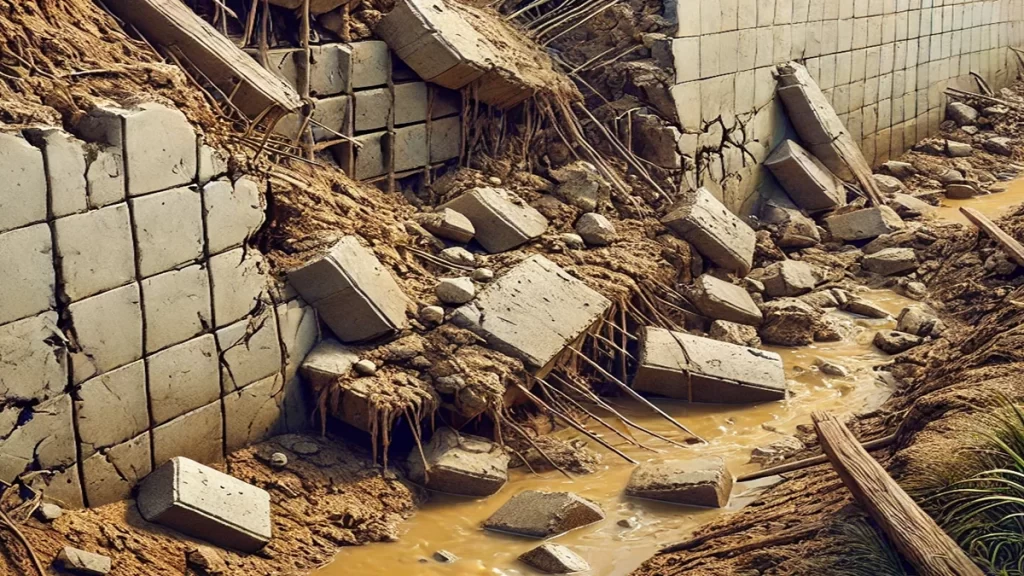
Sliding Failure
Retaining wall failure of sliding can happen when the entire wall moves horizontally due to excessive lateral earth pressure. This will happen when the resisting forces at the base (friction and passive resistance) are not enough to counteract the sliding forces.
The wall will slide if the lateral forces exceed the frictional resistance at the base. This can be mathematically expressed as follows:

For sliding failure to occur: \( F_{s} > F_{r} \)
\( F_{s\;}=P_a \)
Where:
- \( F_{s} \) = Sliding Force
- \( P_{a} \) = Active earth pressure.
Resisting Force (\(F_{r}\)) (due to friction and passive resistance):
\( F_{r}=W×μ+P_{p} \)
Where:
- \( W \) = Weight of the wall.
- \( μ \) = Coefficient of friction between the base and soil.
- \( P_{p} \) = Passive earth pressure on the toe of the wall.
Factor of Safety against Sliding (\(FS_{S} \)):
To prevent sliding, the factor of safety against sliding \((FS_{S} \)) must be ≥ 1.5.
\( FS_{S}=\frac{F_r}{F_s} \)
Causes of Sliding Failure:
Sliding failure will occur if sliding force (\(F_{s}\)) is greater than resistant force (\(F_{r}\)) which may be caused due to any one or a combination of the following factors are present at the site.
- Lack of proper foundation friction or passive resistance.
- Incorrectly designed base width.
- Insufficient drainage, increasing lateral pressure.
Precaution For Sliding Failure:
To prevent sliding failure of a retaining wall, the following precautions should be taken:
- Ensuring a proper design with a factor of safety of at least 1.5 against sliding failure is essential.
- Providing frictional materials at the base like soling and lean concrete. Also, proper compaction of the foundation soil and increasing the base width will increase the contact area between the wall and the soil.
- In the case of a gravity wall, the base should be provided with a slope outside.
- Providing shear key at the foundation in the case of R.C.C. retaining wall where areas with poor soil conditions or high lateral loads.
- Providing proper drainage like Weep holes, Drainage pipes and Gravel backfill will reduce the build-up of hydrostatic pressure behind the wall, which can lead to increased lateral earth pressure.
Over Turning Failure
This occurs when the lateral earth pressure causes the wall to rotate or overturn about its toe (base). The wall tilts or falls outward, leading to instability. The overturning moment about the toe is caused by the lateral earth pressure. The wall will fail if the overturning moment exceeds the resisting moment.
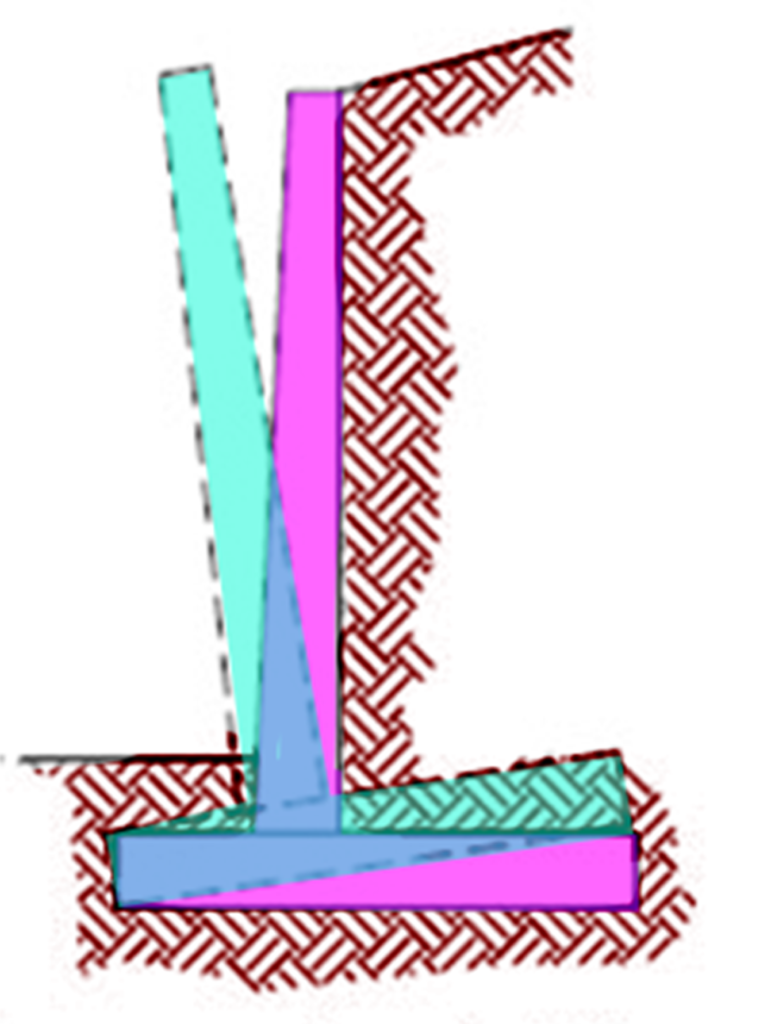
Overturning Moment \((M_{ot} )\):
\( M_{ot}=\frac{P_a\;\times H}3 \)
Where:
- \( P_{a} \) = Active earth pressure (kN/m² or lb/ft²).
- \( H \)= Height of the retaining wall
Resisting Moment \(( M_{r} )\) (due to the weight of the wall):
\( M_{r}=W\;\times\frac B2 \)
Where:
- \( W \) = Weight of the wall.
- \( B \) = Base width of the wall
Factor of Safety against Overturning (\(FS_{O} \)):
\( FS_{O}=\frac{M_r}{M_ot} \)
Therefore, to prevent overturning of the wall, the factor of safety against overturning \((FS_{O})\) must be ≥ 1.5:
Causes of Overturning Failure:
Overturning failure will occur if the overturning moment (\( M_{ot}\))is greater than the resistant moment (\( M_{r}\)) which may be caused due to any one or a combination of the following factors are present at the site.
- Inadequate Wall Design: If the wall is not properly designed to resist the anticipated loads it may lack the stability to counteract these forces.
- Poor Construction: If the wall is not constructed according to the design and use of inferior material, the wall may not achieve the intended strength and stability.
- Surcharge Loads on Backfill: Appliying the additional load such as structure, vehicle and storing materials close to the retaining wall increase the pressure exerted on it, potentially leading to overturning if not accounted for in the design.
- Proper Drainage: Without proper drainage, water can accumulate behind the wall, increasing lateral pressure (hydrostatic pressure) and making the wall susceptible to overturning, especially after heavy rain or in high groundwater conditions.
Precaution For Overturning Failure:
To prevent overturning failure of a retaining wall, the following precautions should be taken into account:
- Proper Design: The wall should be properly designed to resist the maximum lateral earth pressure, taking into account factors like soil type, moisture content, backfill slope, surcharge loads, and any seismic forces if it is in a seismic zone.
- Incorporate Drainage Systems: Installing drainage measures like weep holes, drainage pipes, or geotextile filters to prevent the buildup of water pressure behind the wall.
- Reinforcement and Anchoring: To increase the wall’s resistance to lateral forces, provide reinforcement of steel or use tiebacks or soil nails for additional anchorage, especially for taller walls.
Also, read: Soil Nail and Soil Nailing: Reinforcing Slope Stability
Bearing Capacity Failure
The soil beneath the wall’s footing is unable to adequately support the loads, leading to the wall sinking, tilting, or ultimately collapsing. Bearing capacity failure occurs when the pressure exerted by the wall exceeds the soil’s capacity to bear the load. This is mathematically expressed as:
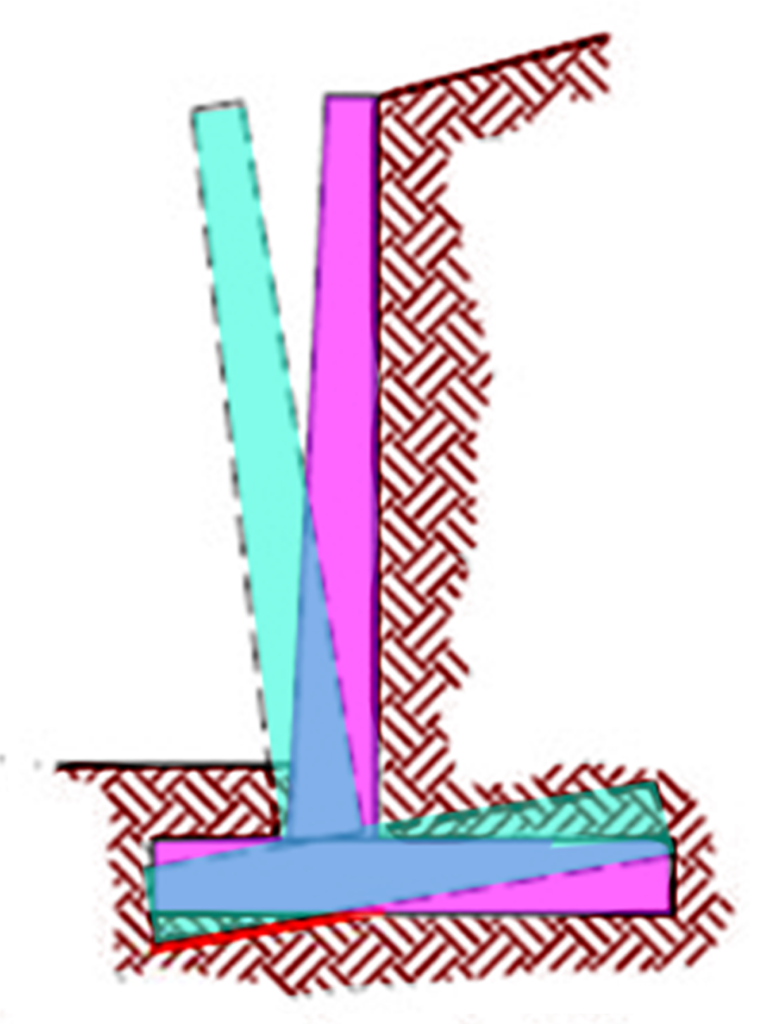
Ultimate Bearing Capacity \((q_{u} \)) (from Terzaghi’s Bearing Capacity formula):
\( q_u=cN_c+\gamma D_fN_q+0.5\gamma BN_\gamma \)
Where:
- c = Cohesion of the soil.
- \(N_{c}, N_{q}, N_{\gamma}\)= Bearing capacity factors (dependent on soil properties).
- \(\gamma\) = Unit weight of the soil.
- \(D_{f}\) = Depth of the foundation.
Factor of Safety against Bearing Capacity Failure (\(FS_{B})\)
\( FS_{B}=\frac{q_u}{q_{max}} \)
Where:
- \(q_{u} \) = Bearing capacity of the soil
- \(q_{max}\) = Bearing pressure
\(q_{max}=\frac{4\sum_{}M}{3\times1\times\left(B-2e\right)}\)
Where:
- \(\sum M\) = Total moment
- \(B \) = Base width of the wall
- \(e\) = eccentricity of wall
The factor of safety against bearing capacity failure should be ≥ 3 is recommended.
Also, read: Bearing Capacity of Soil: The Foundation of Geotechnical Excellence
Cause of Bearing Capacity Failure:
Bearing capacity failure of the retaining wall may occur due to the potential contributing factors listed below.
- Inadequate Soil Bearing Capacity: This is the primary reason when the soil does not have sufficient strength to bear the weight of the retaining wall and the lateral pressures exerted by the retained material.
- Excessive Loading: When the soil is excessively loaded from the retaining wall and retaining material such as heavy traffic, structures or poor drainage, the soil can shear or compress excessively, leading to uneven settlement and finally causing the wall to sink or tilt.
- Soil Type and Characteristics: Different soil types have varying load-bearing capacities, with loose or saturated sands, silts, and clays generally being weaker than dense granular soils. Building a retaining wall on unsuitable soils, like poorly compacted fill or expansive clays, raises the risk of failure due to these soils’ tendency to expand, contract, or change volume with moisture fluctuations, resulting in instability.
- Erosion: Erosion caused by surface runoff, groundwater flow, or poor drainage can remove soil creating voids beneath the wall base undermining the footing, and leading to instability and potential collapse of the wall.
Also, read: Types of Bearing Capacity Failures and Their Characteristics: Terzaghi’s Analysis
References:
- Venkatramaiah, C. (2006). Geotechnical Engineering (3rd ed.). New Age International (P) Limited, Publishers. https://www.newagepublishers.com
- Das, B. (2020). Principles of Geotechnical Engineering.(10th ed) Library of Congress Control Number: 2020943590
- Punmia, B. C., & Jain, A. K. (2005). Soil Mechanics and Foundations (17th ed.). Laxmi Publications (P) Ltd.
- Terizaghi, K., Peck, R.B., & Mesri, G. (1996). Soil Mechanics in Engineering Practice. (3rd ed.). Library of Congress Cataloging in Publication Data.
- Sakleshpur, V. A., Tarachand, V., & Reddy, C. S. (2013). Case study of failure of retaining wall at Dwarakanagar, Visakhapatnam.
- Duckett, M. (2023, June 20). Retaining wall failures. https://www.robsonforensic.com/articles/retaining-wall-failure-expert
- Lim, A. (2018). Lesson learned from retaining wall failures: a geotechnical disaster. MATEC Web of Conferences, 229, 03014. https://doi.org/10.1051/matecconf/201822903014
![]()





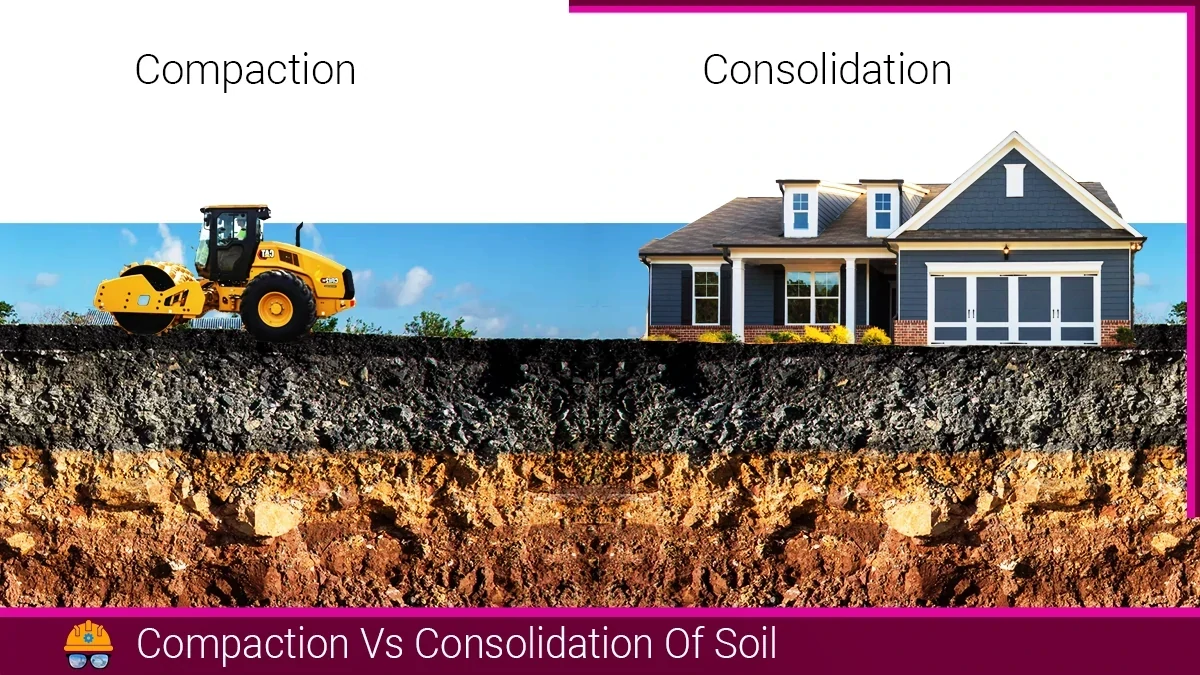
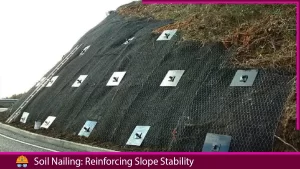
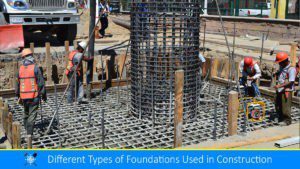
Can anybody tell me if a retaining wall will fail for certain if the “wheel” of a retaining wall is off by several inches (measured from the outside of the foundation wall to the wall stem)? The total dimension should be 15 inches and it is only 11 inches because the stem was not put on the base correctly.